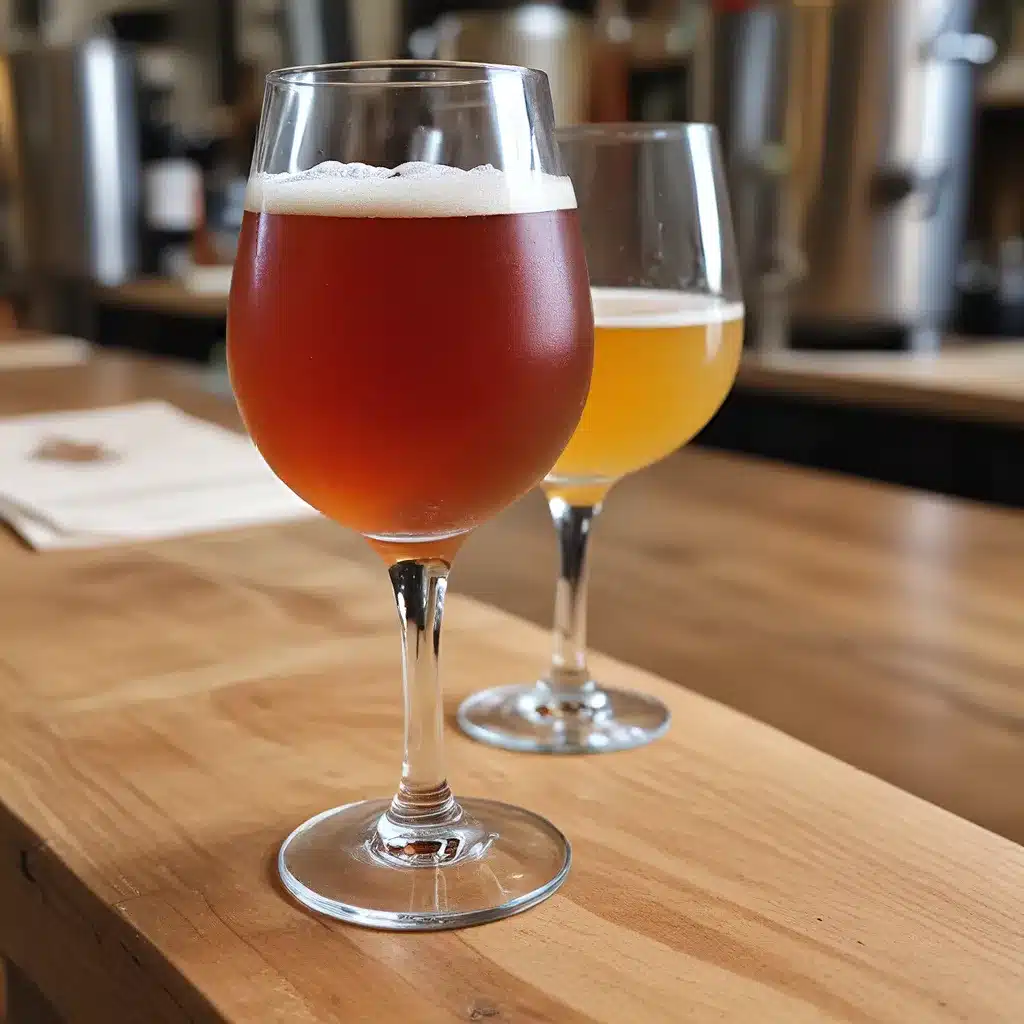
The Delicious Depths of Sour Beer Alchemy
If you’re anything like me, the thought of crafting your own sour beer at home has probably crossed your mind more than a few times. The allure of those tart, funky, and oh-so-complex flavors is simply irresistible. But where do you even begin? Fear not, my fellow beer enthusiasts, for I’m about to take you on a journey into the captivating world of homebrewing sour beers.
Let’s start with the basics, shall we? When it comes to sour beers, the magic lies in the fermentation process. Unlike their clean, crisp counterparts, these beers are intentionally inoculated with wild yeast and bacteria to produce a range of delightful (and sometimes delightfully strange) flavors. The bottom range, as Perrin Brewing suggests, can be as low as 4% ABV, while the top range can reach a respectable 8% or more, depending on your preferences.
Now, the fun part: selecting your flavors. As the folks at Nordic Food Lab so eloquently put it, “We wanted to deconstruct the flavor profile of a porter and recreate those flavors without using the traditional roasted malts to create a light blonde colored full flavored beer.” The same principle applies to sour beers – the possibilities are endless! Do you crave a tart, cherry-kissed lambic? A funky, Brett-forward farmhouse ale? Or perhaps a rich, barrel-aged beauty with notes of vanilla and dark chocolate? The choice is yours, my friend.
The Art of Blending
One of the most intriguing aspects of sour beer brewing is the art of blending. Much like a master painter mixing colors on a palette, the skilled sour beer brewer combines various fermented liquids to create a harmonious, multi-layered masterpiece. This process is where the true alchemy of sour beer shines.
Imagine a crisp, citrusy Berliner Weisse, blended with the deep, earthy notes of a barrel-aged Flanders Red. Or a tart, cherry-infused Kriek, layered with the vanilla-tinged complexity of a bourbon barrel-aged stout. The possibilities are endless, and the resulting flavors can be nothing short of mind-blowing.
But blending is no easy feat. It requires a deep understanding of the individual components, their strengths, and how they’ll interact. It’s a delicate dance, a carefully calculated experiment that can make or break the final product. And when it’s done right, the results can be nothing short of transcendent.
The Science Behind the Sour
Now, let’s dive a little deeper into the science that underpins the art of sour beer brewing. As Cantillon Brewery so eloquently states, the “top range” of sour beers can push the limits of our taste buds, reaching heights of complexity that can be both awe-inspiring and, at times, a bit bewildering.
At the heart of it all is the interplay between yeast and bacteria – a delicate dance that, when executed with precision, can transform humble grains and hops into something truly extraordinary. From the tart, citrusy notes of Lactobacillus to the funky, earthy aromas of Brettanomyces, each microorganism brings its own unique personality to the party.
But it’s not just about throwing a handful of critters into the mix and letting them do their thing. No, the true sour beer alchemist must meticulously balance these microbial forces, carefully controlling temperature, pH, and a host of other variables to coax out the desired flavors. It’s a science as much as an art, and the best sour beer brewers are true masters of their craft.
Embracing the Unpredictable
One of the things that makes sour beer brewing so captivating is its inherent unpredictability. Unlike their more predictable lager and ale counterparts, sour beers thrive on a certain level of chaos – a willingness to embrace the unknown and the unexpected.
After all, when you’re working with living, breathing microorganisms, you can never be entirely sure what’s going to happen. A batch that starts off tasting bright and citrusy might morph into something altogether different a few months down the line, revealing unexpected layers of flavor and complexity.
And that, my friends, is part of the allure. Sour beer brewing is a journey of discovery, a constant exploration of the unknown. It’s about letting go of control, trusting the process, and allowing the beer to reveal its true nature in its own time.
So, if you’re the type who thrives on a bit of uncertainty, who revels in the thrill of the unexpected, then sour beer brewing might just be the perfect creative outlet for you. Embrace the unpredictable, and let your inner mad scientist run wild!
Becoming a Sour Beer Alchemist
Now, I know what you’re thinking: “This all sounds amazing, but where do I even start?” Fear not, my fellow beer enthusiasts, for I’m here to guide you on your journey to sour beer alchemy.
The first step, of course, is to dive headfirst into the world of homebrewing. Start small, with simple, straightforward styles like a Berliner Weisse or a Flanders Red. Get a feel for the process, learn the ins and outs of fermentation, and start to develop a sense of what flavors you’re drawn to.
As you gain confidence and experience, start to experiment. Introduce wild yeast strains, play with different ingredient combinations, and don’t be afraid to let your creativity run wild. Remember, the key to great sour beer is a willingness to embrace the unexpected.
And don’t forget to seek out inspiration from the masters. Visit your local craft beer haven, The Up & Under Pub, and sample their selection of sour beers. Take notes, ask questions, and let your taste buds be your guide.
Because at the end of the day, becoming a sour beer alchemist is all about passion, curiosity, and a deep appreciation for the art of the craft. It’s about diving headfirst into the unknown, embracing the chaos, and creating something truly extraordinary.
So, what are you waiting for? Grab your brewing gear, dust off your lab coat, and let’s get to work! The world of sour beer alchemy awaits.

